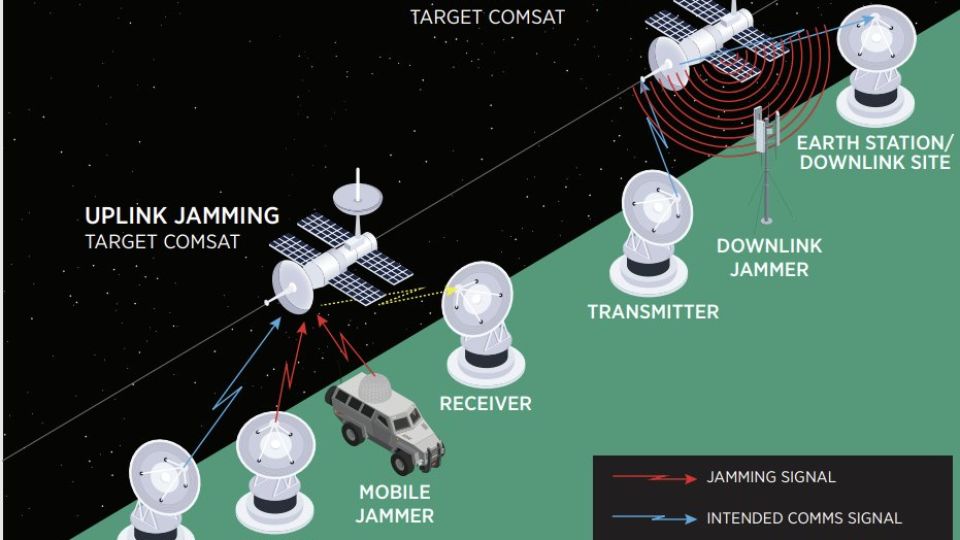April 14, 2022
SEOUL – North Korea will continue focusing on enhancing and operating nonkinetic counterspace and electronic warfare capabilities to attack and disrupt the US and other adversaries’ space systems, the US military said, defining the country as an emerging challenge to the US’ space posture.
The US Defense Intelligence Agency on Tuesday released a special report called “2022 Challenges to Security in Space” to address the threats to the US’ space capabilities.
The report identified the threats as mainly from China and Russia, and to a lesser extent by North Korea and Iran and examined these countries’ space strategies and systems.
The US’ adversaries “are now seeking ways to expand their own capabilities and deny the US a space-enabled advantage,” the agency said, taking note of the US military’s heavy reliance on space-based systems such as a global positioning system.
The DIA assessed that North Korea has specifically developed and demonstrated electronic warfare capabilities, which enable the country to “conduct electronic attacks to disrupt, deny, deceive, or degrade” the US and its other enemies’ space services and assets.
“North Korea has demonstrated nonkinetic counterspace capabilities, including GPS and SATCOM (Satellite Communication) jamming, and probably intends to deny space-based navigation and communications during a conflict,” the report said.
Jamming and spoofing are part of the techniques that can be used in electronic space warfare. With the techniques, North Korea can prevent adversaries from receiving intended signals or deceive adversaries by transmitting a fake signal with erroneous information.
The DIA also underscored that “Iran and North Korea will focus on increasing their capabilities in the civil and military domains to counter space-based services,” labeling them as “emerging challenges” to the US’ space posture and security.
China and Russia, antithetically, continue to develop and deploy counterspace weapons including ground-based lasers and anti-satellite missiles.
“Iran and North Korea will continue to develop and operate electronic warfare (EW) capabilities to deny or degrade space-based communications and navigation,” the Pentagon’s intelligence agency said.
The US military said “both will maintain their ability to conduct EW against adversaries,” echoing the US government’s continued concern about North Korea and Iran’s counterspace and jamming capabilities to target satellite communications and positioning, navigation and timing services.
But North Korea and Iran also “theoretically could use their missile and SLV advancements to target orbiting satellites,” the military intelligence agency warned. The SLV is the abbreviation of a space launch vehicle.
The DIA elucidated that North Korea’s ballistic missiles and space launch vehicles such as the Unha-3 “in theory could be used to target satellites in a conflict.”
North Korea has pressed to develop “electronic warfare as an essential tool in countering the threat posed by advanced Western weapon systems and precision-guided munitions,” the DIA said last October in its “North Korea Military Power” report.
Pyongyang sees electronic warfare capabilities as “critical to denying and disrupting enemy command and control, targeting, and intelligence gathering efforts,” according to the report.
In particular, North Korea has used its GPS jamming capabilities against South Korea since 2010.
Despite limited space and counter-space capabilities, North Korea is believed to have made substantial progress in developing jamming capabilities to disrupt satellite systems, including military satellite communications, after the country acquired GPS jammers from Russia.
The Center for Strategic and International Studies this month also raised concerns that North Korea’s electronic warfare capabilities would pose a threat to the US in space in its annual report “Space Threat Assessment 2022.”
The Washington-based think tank pointed out North Korea is unlikely to “actively” pursue direct ascent or co-orbital anti-satellite weapons or any non-kinetic physical capabilities.
“However, the country has demonstrated successful electronic warfare by showcasing its jamming capabilities, and its cyberattack threat is active and viable, though most often used for economic bolstering rather than aimed at space assets,” the CSIS said.
The CSIS forecast that North Korea’s jamming and cyberattack capabilities “have the greatest potential for counterspace applications.”
“As the country acquires more advanced technology, likely through illicit means, and gains operating experience, threats to space systems and ground stations will likely become more credible,” the report added.
In the report, the DIA on Tuesday pointed out “multiple North Korean hacker groups have targeted the aerospace industries, potentially including space technologies.”
The US military intelligence agency also said North Korea’s “space program has also enabled testing of technology used in ballistic missiles under the guise of peaceful use of space.”
“These systems provided North Korea with valuable data applicable to the development of long-range and multistage ballistic missiles.”
In February and March, North Korea conducted two ballistic missile tests, involving a new Hwasong-17 Intercontinental Ballistic Missile system. But the country labeled them as “important” tests for developing a reconnaissance satellite.


